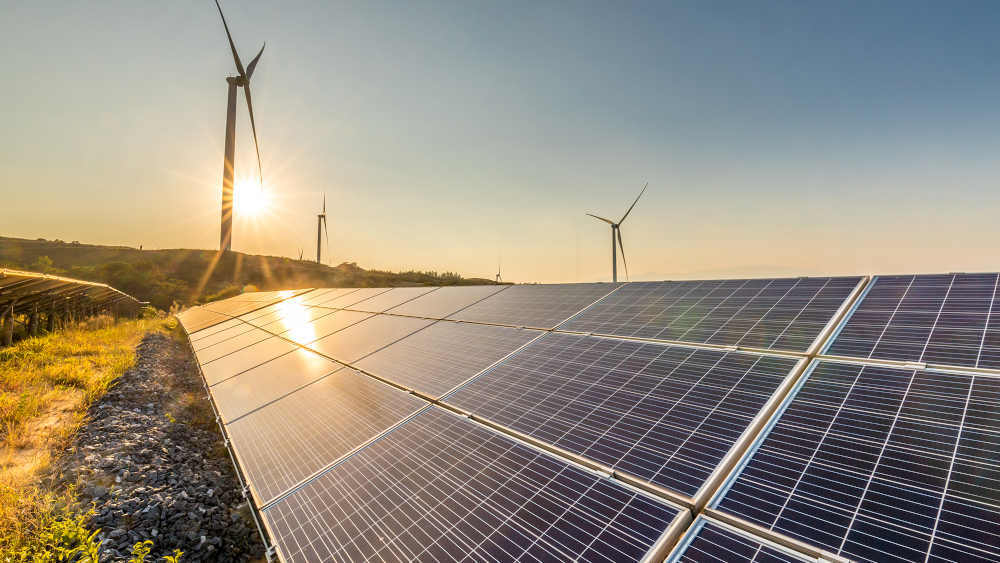
A Texas A&M University researcher’s collaborative study titled “An Integrated Approach for Managing Microgrids with Uncertain Renewable Sources, Demand Response and Energy Markets” has been chosen for a 2020-21 Los Alamos National Laboratory (LANL) Collaborative Program Award in the category of research projects.
Dr. Natarajan Gautam, professor in the Wm Michael Barnes ’64 Department of Industrial and Systems Engineering, has partnered with LANL staff scientist Dr. Harsha Nagarajan for a four-year research project focusing on energy needs, demand and future power supply for small communities, and microgrids using solar and wind power.
This four-year research project is a part of a collaboration between The Texas A&M University System and LANL. It is designed for A&M System researchers to collaborate with LANL researchers on an identified topic suitable for joint-effort funding from National Laboratories Office and LANL. One of the main goals of this program is to increase the depth and number of research collaborations between the two institutions and the individuals involved.
While figuring out an efficient way to bring renewable power to a small community population, a question that needs to be answered is whether that power gets stored in individual batteries for future household use, or if it gets sold back into the grid to be used by individuals in real time, all while keeping the power available and at affordable rates.
“We are trying to see what challenges we may face so that while we develop this kind of distributed technology, we will have it in place so that everything runs smoothly,” Gautam said. “You want to have quality service — you never want the lights to be off — but you also want to reduce the cost as much as possible, and have as little inconvenience as possible.”
Having highly distributed energy means that people will create energy locally as an alternative to large-scale power grids thereby using renewable energy efficiently. Gautam says the research will help mitigate spiking and plummeting currents, and ultimately, make electricity cheaper for consumers when they are only tapping into the grid when power is needed.
Gautam and Nagarajan are going to be evaluating two possibilities for homes to manage power supply-demand imbalance: each residence having its own battery for power storage, that may include a device resembling Tesla’s Powerwall, or residences having one main line connected to the grid.
Large-scale power operations have the ability to diversify their portfolio when needed. It is more difficult to supply power to a community of people because of the size of a microgrid. On the other hand, if large-scale grids experience an interruption there are many people who are affected.
In addition, weather poses its own set of uncertainties, particularly with renewable energy, which can be exacerbated when working on a community level.
Fossil fuels provide more leeway in deciding how much power is needed on the grid at any given time, and production can be cut or increased from there based on demand. When working with renewables, the weather on any given day is the gatekeeper for how much power, if any, can be produced.
If it’s a bright, sunny day and there is a considerable amount of solar power being produced, the next question is what to do with all of that extra power. However, on a cloudy day there will not be much production. Gautam says that with the number of statistical methods included in this research, there may be a way to automatically predict this in advance, ultimately leading to a more efficient grid system.
“You don’t want each individual to have to make this decision every day. We want to have something in a software system that will do what is best for users,” Gautam said. “This is very data driven, and we have a lot of historical data we can pull from. You want to make an informed decision right now, but also have a good idea of how the future is going to pan out.”
“This research includes a lot of optimization, modeling and uncertainty in the system, especially when you talk about wind and solar. It is very difficult to predict tomorrow, or the day after, let alone several months down the road,” Gautam said. “That is part of the reason as to why we haven’t gone ahead with much of these renewable energy efforts is because of the amount of uncertainty that’s there.”
The foundation for this research leans heavily into the operations research and systems engineering areas of industrial and systems engineering because of the number of analytical methods needed for forecasting, and creating an integrated system that can handle the fluctuation of providing renewable power to small communities of people is the ultimate goal.
